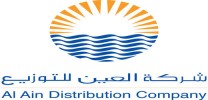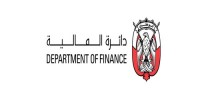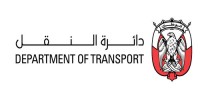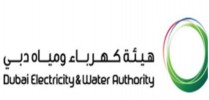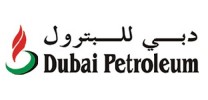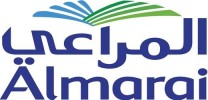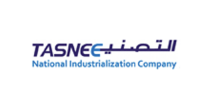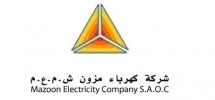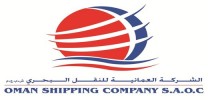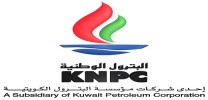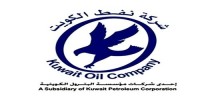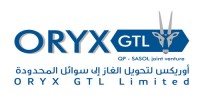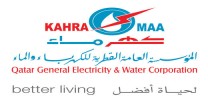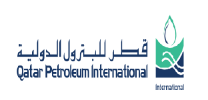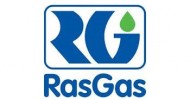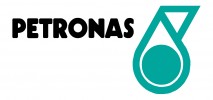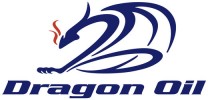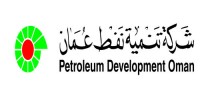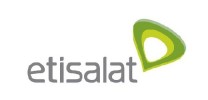
HAZMAT & HAZWOPER
Course Introduction:
This course covers broad issues pertaining to the hazard recognition at work sites. OSHA has developed the HAZWOPER program to protect the workers working at hazardous sites and devised extensive regulations to ensure their safety and health. This course, while identifying different types of hazards, also suggests possible precautions and protective measures to reduce or eliminate hazards at the work place.
Course Objectives:
Upon successful completion of this course, the delegates will be able to:
- Review the regulatory overview of the agencies, laws and regulations in HAZMAT and HAZWOPER
- Understand how hazardous materials are handled, identified and human responses to exposure
- Use appropriate safety methods and work practice controls
- Recognize signs and labels that are used to alert personnel of danger involving hazardous material
- Reduce the potential hazards and protect the workers in public and the environment
- Operate in a safest possible manner in situations and practice safety among employees who may be exposed to chemical hazards in the work-site
Who Should Attend?
This course is intended for engineers, project managers or surveyors who works at a hazardous waste clean-up site on an occasional basis and those who are regularly works with or cleans up hazardous materials or wastes with exposures within “permissible” levels.
Course Outline:
Day 1:
Agencies, Laws and Regulations
- Hazardous Materials Regulatory Overview
- OSH Act
- OSHA, EPA, DOT, NIOSH
- CERCLA, SARA, RCRA, TSCA
Understanding the Hazard Communication Standard (29 CFR 1910.1200)
- Background Information
- "Employee Right to Know" Rule
- How the Standard Works
- Written Hazard Communication Program
- Material Safety Data Sheet (MSDS)
- Employee Information and Training
HAZWOPER Training
- OSHA Regulation for Training
- Training Sessions
- Written Programs
- HAZWOPER Training Requirements
- Site Supervisors
- Refresher Training
- Treatment, Storage and Disposal (TSD) Facility Training
- Emergency Response Personnel Training
- First Responder Awareness Level (FRA)
- First Responder Operational Level (FRO)
- Hazardous Material Technician Level
- Hazardous Materials Specialist Level
- Hazardous Materials Scene Manager
Principles of Safety
- Causes of Accidents
- Kinetic/Mechanical Injuries
- Fall Protection
- Stairways or Ladders
- Machine Guarding
- Ignition Sources and Static Electricity
- Lockout/Tag out
- Controlling Energy Sources
- Biological Hazards
- Head Protection
- Eye and Face Protection
- Foot Protection
- Hearing Protection
- Heat Related Illnesses
Day 2:
Toxicology
- Limits of Exposure
- Routes of Exposure
- Measure of Exposure
- Dose-Response
- Toxic Products
- Toxin Chart
Planning and Organization
- Planning a Safe Worksite
- Organizational Structure
- Management's Safety Commitment
- Written Work plan
- Health and Safety Plan
- Emergency Response Plan
- Safety Meetings and Inspections
- Training Programs
Preparation for Fieldwork
- Permits
- Utilities
- Initial Site Visit
- Site Characterization
- Locating Services
- Traffic and Parking Restrictions
- Site Security
- Mud, Soil, Drums and Site Cleanup
- Steam Cleaning
- Site Facilities
- Subcontractors
- Drilling
- Health and Safety Plans
Chemical Hazard Identification Systems
- Hazard Descriptions
- Explosives
- Gases and Vapors
- Liquefied Gas
- Health Hazards of Gas
- Flammable Liquids
- Fire Hazards
- Flammable Solids
- Oxidizers
- Toxins and Poisons
- Carcinogens
- Corrosives
- HAZCOM
- National Fire Protection Association (NFPA 704 code)
- Department of Transportation Classification
- Hazardous Materials Identification System (HMIS)
- Shipping Papers and Manifests
Day 3:
Understanding Radiation Safety
- Atoms
- Radiation
- Ionization
- Ionizing Radiation
- Alpha and Beta Particles
- Gamma Rays, X Rays, and Neutrons
- Natural Background Radiation
- Man-Made Sources of Radiation
- Radioactive Waste
- Radioactive Decay
- Interaction with Matter
- Measurement of Radiation
- Radiation Detection Instruments
- Radiation Exposure
- Health Effects of Radiation Exposure
- Chronic and Acute Exposure
- Risks of Exposure
- Protection and Shielding
Respiratory Protection
- Classification of Materials Present in Air
- Health Effects of Oxygen-Deficiency
- Important Terms
- Controls
- Written Program
- Ignition Sources and Static Electricity
- Lockout/Tag-out
- Medical Evaluation
- Respirator Training
- Employer Responsibility
- Selection of Respirator Protection
- Choice Considerations
- Types of Respirator Protection
- Advantages and Disadvantages
- Air Purifying Respirator (APR)
- Particulate Respirators
- Canister or Cartridge
- Cartridge Maximum Use
- Powered Air Purifying Respirators (PAPR)
- Atmosphere Supplying Respirators
- Hose Mask Respirators
- Air Line Respirators
- Self-Contained Breathing Apparatus (SCBA)
- Breathing Air Quality
- Respirators for IDLH atmospheres
- Protection Factors
- Proper Use
- Fit Testing
- Testing Methods
- When a Respirator is Needed
- Extreme Temperatures
- Inspection, Storage, Maintenance, and Repair
- Air Cylinders
Personal Protective Equipment
- PPE Decision Making
- Types of Protection
- Levels of Protection
- Descriptions of Levels A, B, C, D
- Materials and Quality of Construction
- Fire and Heat Protection
- Understanding PPE Limitations
- Health Considerations
- Inspection and Maintenance
Air and Environmental Monitoring
- Initial Site Survey
- Principles of Gas
- Preliminary Onsite Evaluation
- Procedures for Atmospheric Monitoring
- Organic Vapors and Gases
- Radiation
- Oxygen Deficiency, Oxygen Enrichment, Combustible Gases, and Visual Observations
- Initial Entry and Surveys
- Priority for Initial Entry Monitoring
- Periodic Monitoring
- Ambient Atmospheric Concentrations
- Vapor Density
- Direct Reading Instruments
- Air Monitoring Instrument Data
- Air Monitoring Equipment
- Equipment Certification
- Reliable and Useful Results
- Calibration and Relative Response
- Types of Direct Reading Instruments
- Combustible Gas Indicator (CGI)
- Toxic Atmosphere Monitors
- Colorimetric Indicator Tubes
- Photo ionization Detector Tubes (PID)
- Flame Ionization Detectors (FID)
- Organic vapor Analyzer (OVA)
- Aerosol Monitors
Day 4:
Sampling and Packaging
- Sampling Objectives
- Classification of Samples
- Quality Assurance/Quality Control (QA/QC)
- Location of Sampling Sites
- Sampling Methods and Data
- Liquid Samplers
- Solid Samplers
- Cleaning and Storage Procedures
Fire Protection
- Requirements
- Fire and Extinguisher Identification
- Extinguisher Types and Maintenance
- Location of Extinguishers
- Additional Fire Fighting Equipment
- Fire Fighting Foams
Handling Drums and Containers
- Drum Inspection
- Drum Identification
- Drum Handling
- Drum Contents
- Lab Pacs
- Opening Drums
- Drum Sampling
- Content Characterization
- Drum Staging
- Bulking
- Shipment
- Special Case Problems
Confined Space Hazards
- 29 CFR 1910.146
- OSHA Protection
- Written Entry Procedures
- Personnel Affected by the Permit-Required Confined Space Standard
- Hazardous Atmospheres
- Toxic Vapors and Gases
- Flammable Atmospheres
- Atmospheric Testing
- Ventilation
- Other Hazards
- Requirements for Entering Permit-Required Confined Spaces
- Non-Permit Confined Spaces
- Entrance into Permit-Required Confined Spaces
- Safeguarding Confined spaces
- Isolation, LO/TO
- Evacuation from a Confined Space
- Site Security
Day 5:
Site Emergencies
- Incident Management and Scene Control
- Site Safety Plan
- Incident Command System
- Incident Commander
- Job Functions
- Onsite Personnel
- Site Leaders
- Offsite Personnel
- Federal Response Organizations
- Emergency Training
- Emergency Identification and Prevention
- Onsite Communication
- Site Mapping
- Safe Distances
- Refuges (Safety Stations)
- Public Evacuation
- Site Security and Control
- Personal Locator Systems
- Evacuation Routes
- Decontamination
- Emergency Equipment
- Medical Treatment and First Aid
- Emergency Response Procedures
- Rescue/Response Action
- Evaluations
- Follow-up
- Documentation
Decontamination Procedures
- 29 CFR 1926.65
- Basic Decontamination
- Site Selection and Management
- Planning for Decontamination
- Setting Up the Decontamination Area
- Decontamination Methods
- Decontamination Procedures
- Decontamination Process
- Analysis of Decontamination
- Decontamination Process Charts for Levels A, B, and C
Medical Surveillance
- OSHA Medical Requirements
- Developing a Medical Program
- Recommended Medical Examination Chart
- Medical Program Effectiveness
- Medical Program Development
- Occupational and Medical History
- Ability to Work While Wearing PPE
- Tests Performed by Occupational Physicians
- Periodic Medical Examinations
- Emergency Treatment
- Non-emergency Treatment
Course Methodology:
A variety of methodologies will be used during the course that includes:
· (30%) Based on Case Studies
· (30%) Techniques
· (30%) Role Play
· (10%) Concepts
· Pre-test and Post-test
· Variety of Learning Methods
· Lectures
· Case Studies and Self Questionaires
· Group Work
· Discussion
· Presentation
Course Fees:
This rate includes participant’s manual, Hand-Outs, buffet lunch, coffee/tea on arrival, morning & afternoon of each day.
Course Timings:
Daily Course Timings:
08:00 - 08:20 Morning Coffee / Tea
08:20 - 10:00 First Session
10:00 - 10:20 Coffee / Tea / Snacks
10:20 - 12:20 Second Session
12:20 - 13:30 Lunch Break & Prayer Break
13:30 - 15:00 Last Session





.jpg)
























